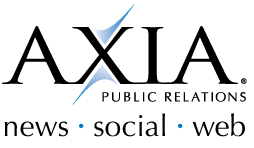Effective Public Relations Strategies for the Declaration of Independence
This week, it’s fun to ask yourself a public relations question as you reflect on the events surrounding the birth of our country: What would John Hancock do today?
It’s both amusing and enlightening to consider how our nation’s forefathers would have shared the message about the Declaration of Independence if they were signing it today. Let’s look at the steps John Hancock and friends took as they worked to share the news, and how it might have looked if they had access to today’s top PR firm tools.
Actual events that took place: On July 4, 1776, the Declaration of Independence is officially approved early in the day. A fellow named John Dunlap carries out the diligent work of printing two dozen copies, including one copy for George Washington himself. These became known by the informative and memorable name “Dunlap Broadsides.” The next day, John Hancock has copies of Dunlap’s Broadsides sent to the Delaware and New Jersey legislatures. By July 6, a version of the Broadsides has become big news in the Pennsylvania Evening Post. Three days pass, and then Washington sends the order to have the full Declaration shared out loud in New York for the army.
What could happen today with PR tools: The Declaration is officially adopted in Philadelphia. (Most of the necessary leaders are there in person, and a few are there via Google Places on tablets placed at the conference room table). John Hancock immediately shares the Declaration with key contacts at the Delaware and New Jersey legislatures using Google Drive. He then sends an official news release to the Pennsylvania Evening Post via email, who places the story on its website, sends alerts via social media channels, including their 46,425 followers, text messages and app subscribers. The news story appears on the front page of the next morning’s print edition. Washington’s PR firm creates a YouTube video announcement of him personally reading the Declaration, and then sends the link from Facebook to the entire army in New York. They share the video with their friends and family. It instantly becomes viral. The document retains its official name the Declaration of Independence – because it’s catchier than the Dunlap Broadsides, and it communicates more clearly to the audience what the document is actually about.
During the three-day lull, John Hancock makes the PR pitch to Time magazine and the NY Times, successfully arranging an interview for Washington with both. He also arranges media events at seven key eastern cities, booking a three-day media tour for George Washington with solidly-crafted key message points. Washington is the official spokesperson of the Declaration of Independence and invests in spokesperson training with his strategic public relations firm partner.
What else actually happened? On July 19, 1776, Congress tells its members to begin inscribing (formally signing) the Declaration document. Just a few weeks later, on Aug. 2, the delegates pick up their quill pens to add their signatures. Meanwhile, a significant portion of the British army lands at New York. By mid-January 1777, all the signed copies have been painstakingly printed and sent to each state for their records.
What PR tools could accomplish today: On July 19, 1776, Congress makes an official announcement on the news portion of their website and through their social media strategy that the official signing has begun. (In this case, e-signatures are not accepted). Ceremonial images and video of the signatures taking place are shared daily with social media audiences to build a rapid PR buzz. A media conference is arranged for the final signatures, giving key interview opportunities with Congress and delegates. The public news conference is streamed online. A simultaneous PR pitch is made to major news outlets and magazines outlining an insider’s “who’s who” of Declaration signers, and several major outlets run the story. (Meanwhile, a crisis PR message is being crafted by key persons of the British army along with a crisis communications firm’s plan).
Seeking to enhance the story with a new angle, a PR agency crafts a message about the mystery of what may be printed on the backside of the Declaration itself. Later Hollywood creates a hit movie with Nicolas Cage. (In reality, what’s on the back of the document is just a basic handwritten label). This mystery angle allows additional interviews with Washington that continue to convey the true meaning and awesome significance of this document.
Today, old-fashioned ingenuity (and some sheer grit) are still part of an effective PR campaign to build your brand credibility. Let Axia PR blend this ingenuity with well-crafted messages, effective media relations and the best PR tools to help your business truly make history among your target audience.
Topics: digital PR, media relations, public relations


Comment on This Article